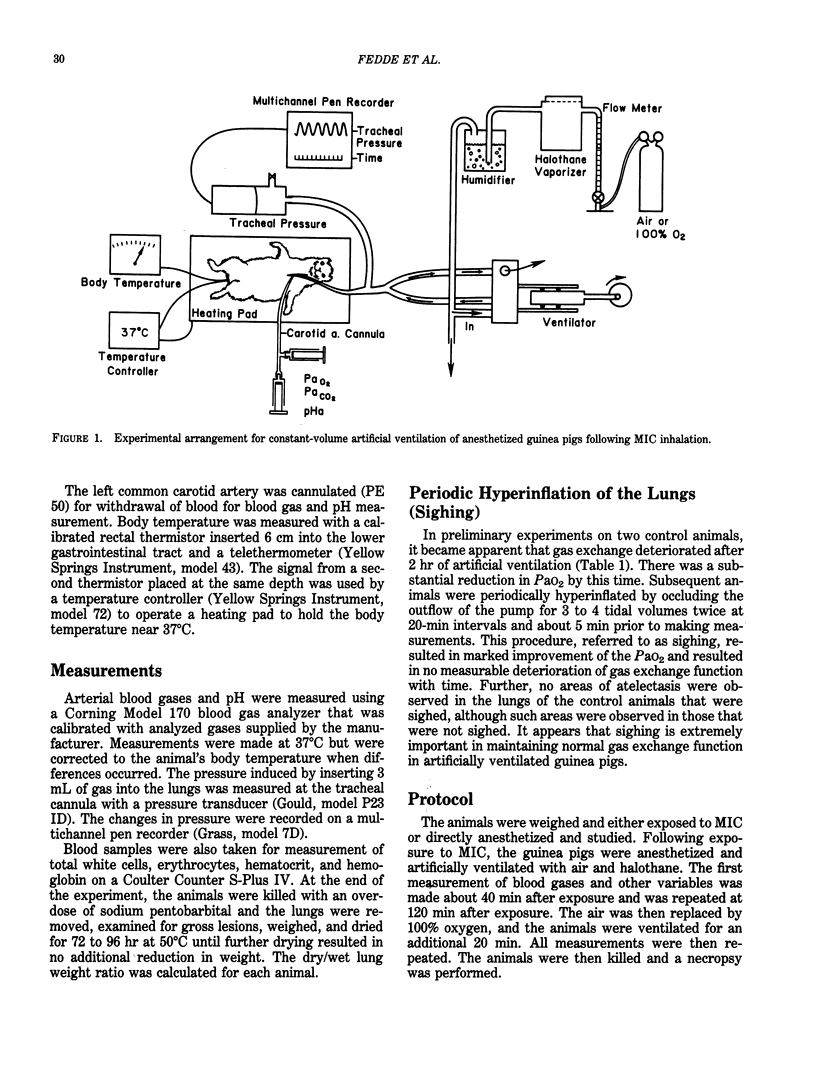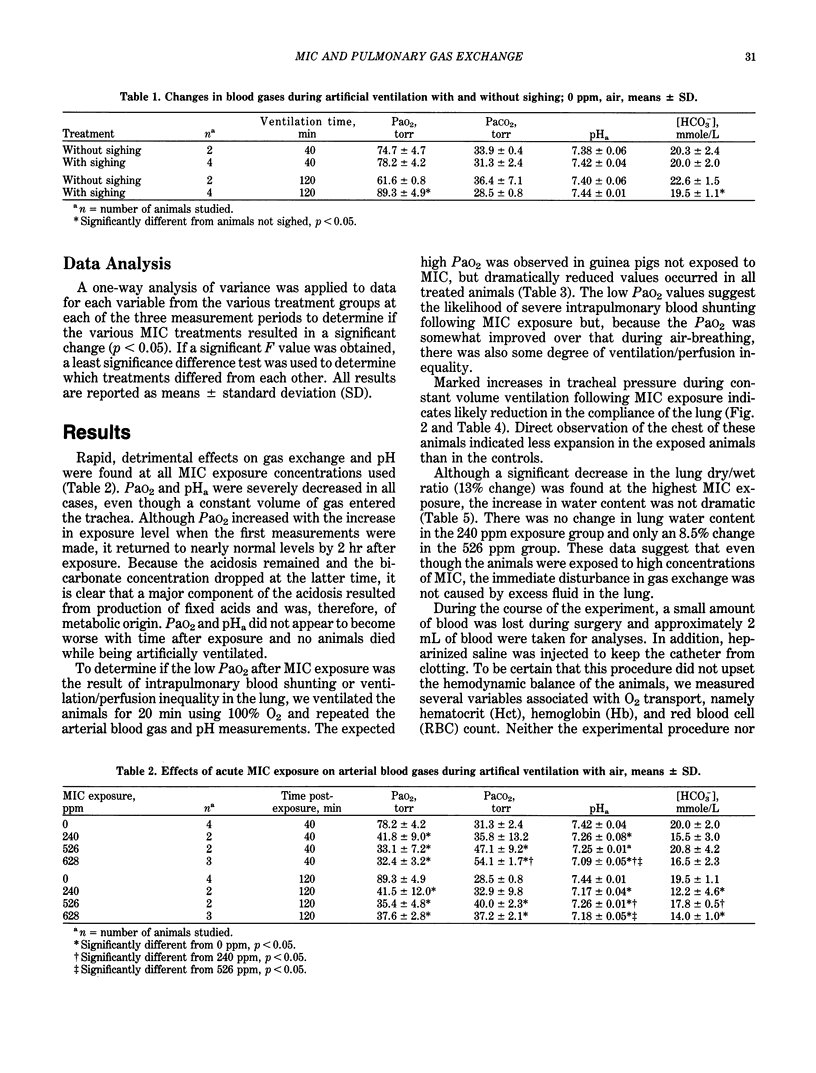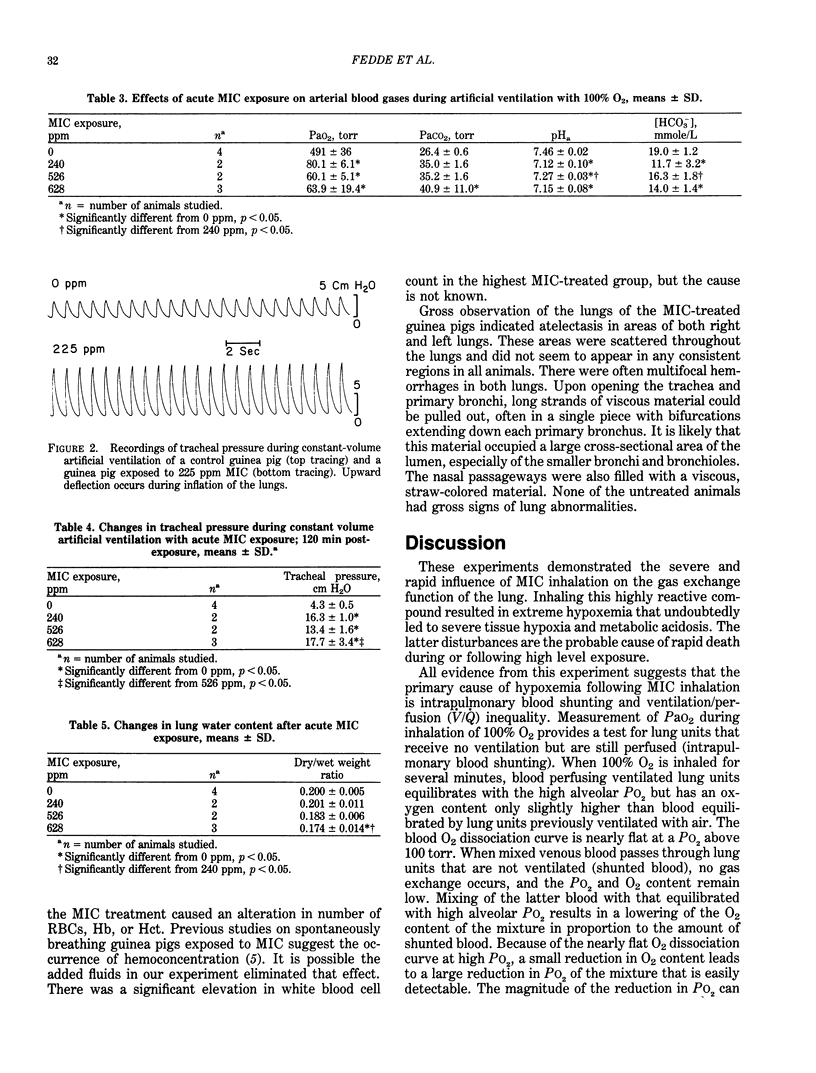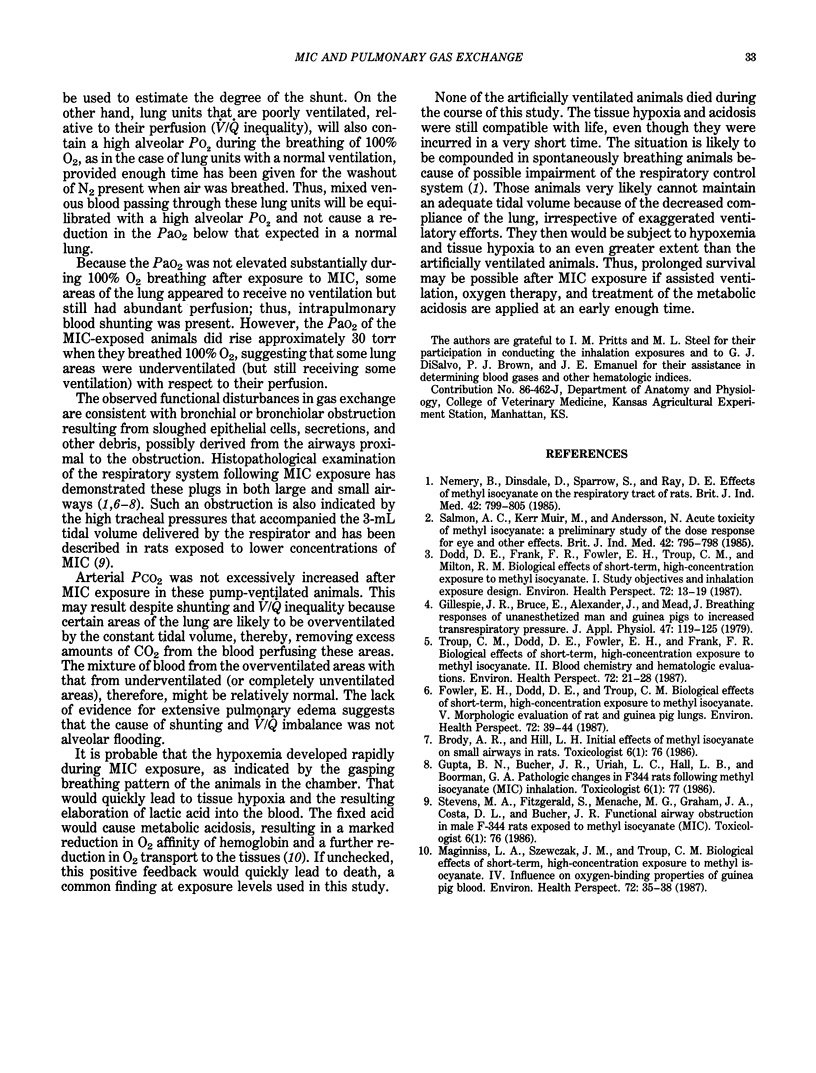Abstract
The influence of methyl isocyanate (MIC) inhalation on the gas exchange function of the lungs in guinea pigs was studied by measuring arterial blood gases, pH, and tracheal pressure during constant-volume, artificial ventilation with air or 100% O2 at 40 and 120 min after exposure. A 15 min exposure to MIC at concentrations of 240 to 628 ppm caused a marked reduction in PaO2 and pHa and an elevated tracheal pressure during artificial ventilation. The low PaO2 was only slightly elevated when the animals were ventilated with 100% O2. Although the dry-wet lung weight ratio was reduced at the highest exposure concentration, the effect was not severe and no significant increase in lung water was found at the lower concentrations. MIC inhalation caused severe pulmonary blood shunting and ventilation/perfusion imbalance. This, in turn, led to hypoxemia, metabolic acidosis, and tissue hypoxia, which could produce death. The pulmonary gas exchange deficit likely resulted from bronchial and bronchiolar obstruction caused by sloughed epithelium and other debris from intra- and extrapulmonary airways.
Full text
PDF




Selected References
These references are in PubMed. This may not be the complete list of references from this article.
- Dodd D. E., Frank F. R., Fowler E. H., Troup C. M., Milton R. M. Biological effects of short-term, high-concentration exposure to methyl isocyanate. I. Study objectives and inhalation exposure design. Environ Health Perspect. 1987 Jun;72:13–19. doi: 10.1289/ehp.877213. [DOI] [PMC free article] [PubMed] [Google Scholar]
- Fowler E. H., Dodd D. E., Troup C. M. Biological effects of short-term, high-concentration exposure to methyl isocyanate. V. Morphologic evaluation of rat and guinea pig lungs. Environ Health Perspect. 1987 Jun;72:39–44. doi: 10.1289/ehp.877239. [DOI] [PMC free article] [PubMed] [Google Scholar]
- Gillespie J. R., Bruce E., Alexander J., Mead J. Breathing responses of unanesthetized man and guinea pigs to increased transrespiratory pressure. J Appl Physiol Respir Environ Exerc Physiol. 1979 Jul;47(1):119–125. doi: 10.1152/jappl.1979.47.1.119. [DOI] [PubMed] [Google Scholar]
- Maginniss L. A., Szewczak J. M., Troup C. M. Biological effects of short-term, high-concentration exposure to methyl isocyanate. IV. Influence on the oxygen-binding properties of guinea pig blood. Environ Health Perspect. 1987 Jun;72:35–38. doi: 10.1289/ehp.877235. [DOI] [PMC free article] [PubMed] [Google Scholar]
- Nemery B., Dinsdale D., Sparrow S., Ray D. E. Effects of methyl isocyanate on the respiratory tract of rats. Br J Ind Med. 1985 Dec;42(12):799–805. doi: 10.1136/oem.42.12.799. [DOI] [PMC free article] [PubMed] [Google Scholar]
- Salmon A. G., Kerr Muir M., Andersson N. Acute toxicity of methyl isocyanate: a preliminary study of the dose response for eye and other effects. Br J Ind Med. 1985 Dec;42(12):795–798. doi: 10.1136/oem.42.12.795. [DOI] [PMC free article] [PubMed] [Google Scholar]
- Troup C. M., Dodd D. E., Fowler E. H., Frank F. R. Biological effects of short-term, high-concentration exposure to methyl isocyanate. II. Blood chemistry and hematologic evaluations. Environ Health Perspect. 1987 Jun;72:21–28. doi: 10.1289/ehp.877221. [DOI] [PMC free article] [PubMed] [Google Scholar]


